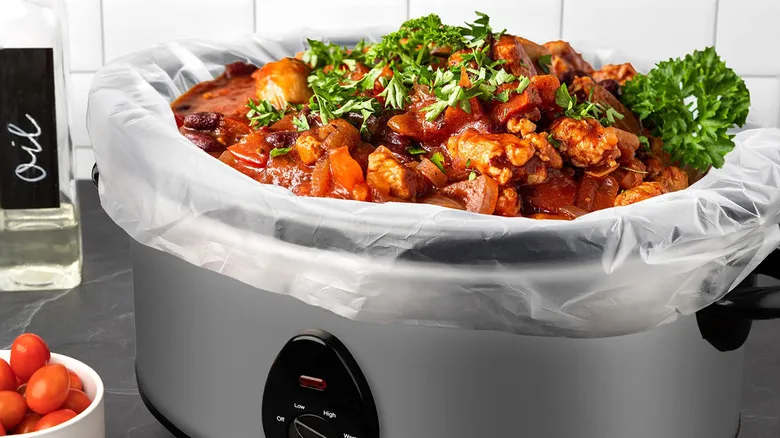Choosing the wrong cut of beef

Beef Stroganoff boasts several components that contribute to its overall satisfaction, but the undeniable star of the dish is the beef itself. Therefore, it’s essential to select the highest quality beef available. Almost every chef we consulted emphasized that the cut of beef can significantly impact the dish. Some cuts are inherently tender, providing juicy, flavorful bites, while tougher cuts can become chewy if not prepared correctly.
Experts agree that the top choices for beef Stroganoff are sirloin, ribeye, and tenderloin due to their rich flavor, quick cooking time, and tenderness. However, tougher cuts shouldn't be overlooked. Meghan Birnbaum, founder of Meghan It Up, advised Chowhound, "If you're opting for more economical cuts like chuck or round, they require a bit more time to become tender, so consider braising them first or using a meat mallet to tenderize." Additionally, using a slow cooker or an Instant Pot can be beneficial for those tougher cuts of beef.
Not velveting your meat beforehand
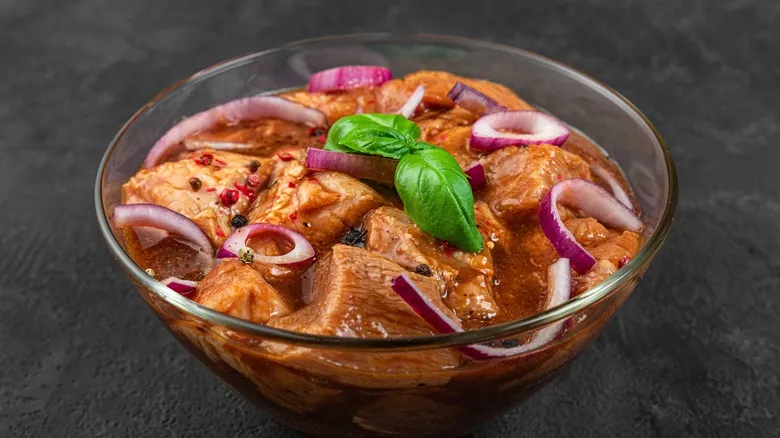
Even if you choose the perfect cut of beef, it may still turn out tougher than you'd prefer. Luckily, there are several methods to remedy this. JD Alewine, co-founder of Them Bites, shared that velveting is the key to achieving incredibly tender beef. He explained, "Velveting meat is a Chinese culinary technique designed to keep meat soft and juicy during stir-frying or other high-heat cooking methods."
While it may seem elaborate, velveting is quite straightforward. Simply coat the meat in a mixture of cornstarch and water and allow it to marinate for 30 minutes to an hour. Some people opt for baking soda instead of cornstarch and substitute water with egg whites. You can also incorporate some seasonings for added flavor. The next step involves quickly blanching the meat in water or oil before the final cooking process to achieve a beautiful glossy finish. Alewine noted, "This technique helps create a silky, tender texture, which is the origin of the term 'velveting.'"
Overcooking the beef
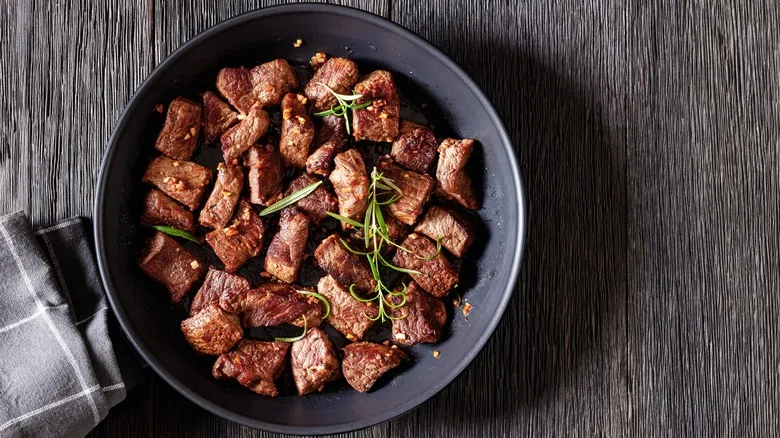
One common error that home cooks make when preparing beef Stroganoff is overcooking the meat. The longer you cook those tender cuts, the more the natural juices will evaporate, leading to dry and rubbery meat. While tougher cuts require longer cooking times to break down the connective tissue, it's important not to overdo it. Overcooked meat can start to disintegrate, resulting in something resembling pulled beef rather than tender chunks with a satisfying bite. The cooking duration will vary based on the cut of beef and the method used.
If you're using a tender cut, Meghan Birnbaum suggests a useful tip for maintaining juiciness: "Quickly sear the beef over high heat, then add it to the sauce at the end just to warm it up. This technique helps preserve the ideal texture and prevents a chewy bite," she advises. For tougher cuts, it's also beneficial to sear the meat first to develop a rich, caramelized flavor. After that, you can braise the beef in a Dutch oven or use a slow cooker until it becomes fork-tender.
Rushing the cooking process
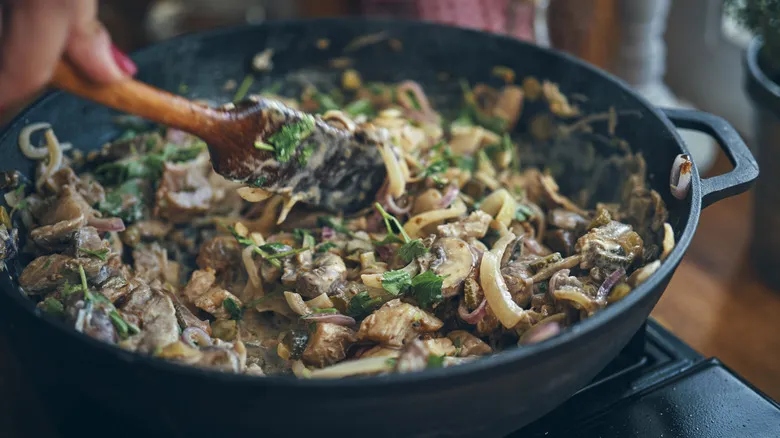
If you're short on time and eager to whip up a tasty meal quickly, you might feel inclined to hurry through the process of making beef Stroganoff. However, many chefs warn that this approach can lead to disappointing results. "Timing is crucial. I've seen people attempt this in a pan in just 15 minutes and then wonder why the meat turns out tough or dry and lacks rich flavor," says Jason Kennedy, the in-house meat expert at Verde Farms. He recommends preparing beef Stroganoff in the oven or a slow cooker for the best results.
While slow-cooking your beef Stroganoff may take longer, it allows the flavors to develop and blend beautifully. Additionally, you can minimize cleanup since everything is cooked in a single pot. Kennedy advises searing the meat in a Dutch oven to retain the juices and achieve a nice char before adding the other ingredients and transferring it to the oven. "A well-made Stroganoff requires about 1.5 hours of baking in a Dutch oven or four hours in a slow cooker," he explains.
Mishandling the mushrooms
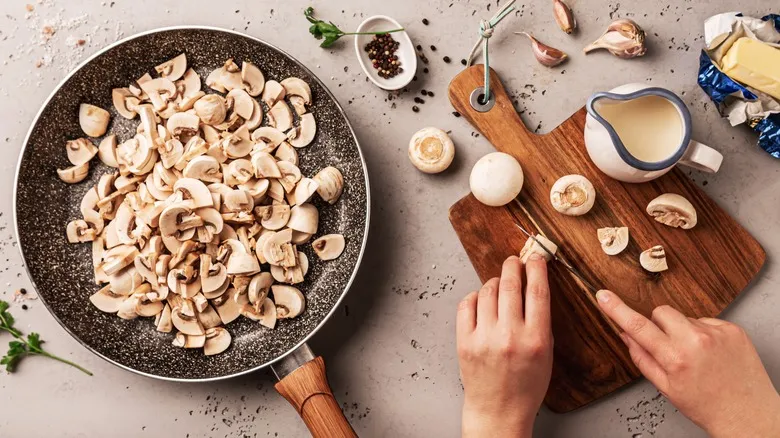
You might assume that mushrooms are one of the simplest components of beef Stroganoff to perfect. Just slice, season, and sauté them, and you’re all set, right? Not quite. Several experts we consulted indicated that this is a step where many people go wrong. If you mishandle your mushrooms, you could end up with bland, watery, or rubbery results.
Mushrooms are high in water content, so the trick is to cook out the moisture without completely drying them out. Jim Carroll from Meat and Greet BBQ advised leaving ample space in the pan to achieve a nice golden-brown color on your mushrooms. "Crowding the pan can cause them to steam rather than brown, which impacts both flavor and texture," he explained.
Jessica Formicola from Savory Experiments shared another tip for enhancing the flavor and texture of mushrooms. "I prefer to cook my mushrooms first, allowing most of the water to evaporate, and then rehydrate them with flavorful liquids like beef broth, red wine, or white wine," she noted. Formicola also recommended removing the mushrooms while preparing the sauce and adding them back in with the cooked beef at the end.
Overcomplicating the vegetables
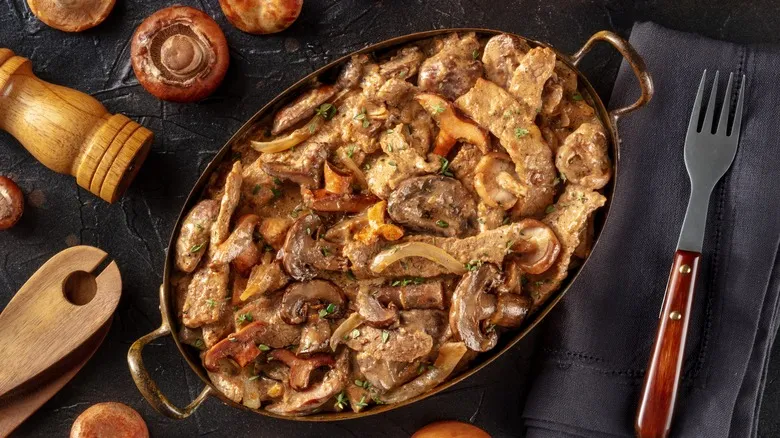
One of the appealing aspects of beef Stroganoff is its indulgence, achieved with just a handful of essential ingredients. At its core, the dish consists primarily of beef, mushrooms, and onions enveloped in a creamy sauce. This simplicity encourages some cooks to experiment with additional vegetables. While many chefs agree that incorporating an extra veggie or two is perfectly fine, they caution against going overboard. After all, those traditional flavor combinations are beloved for a reason.
Fanila Nawaby, chef and owner of Mimi's Kabob, remarked, "Onions and mushrooms are fundamental, but adding too many vegetables can overshadow the classic flavors. It's best to stick with straightforward options like onions and garlic, or perhaps a small amount of peas for a touch of sweetness." Rena Awada from Healthy Fitness Foods advised, "I recommend steering clear of vegetables that release excessive moisture, such as zucchini or eggplant, as they can make the sauce too watery. If you wish to include some greens, lightly wilted spinach or kale can be a wonderful addition without significantly altering the dish's texture."
Skipping the deglazing step

After you've seared your beef, sautéed your mushrooms, and softened your onions, you may notice some brown bits forming at the bottom of your pan. This is known as fond in culinary terms, and it presents a fantastic opportunity to enhance flavor—assuming the fond isn't burnt to a crisp. Many home cooks overlook deglazing the fond or choose to discard it entirely. Chefs will tell you this is a significant oversight, as it means missing out on an extra layer of richness in your beef Stroganoff.
Deglazing is a straightforward process that takes just a few minutes. Simply pour in wine, water, or broth into the hot pan and stir to loosen those brown bits. Allow the liquid to simmer until some of it evaporates, concentrating the flavors. Timing is also crucial when deglazing. Fanila Nawaby advises, "Deglaze with broth or wine before making the sauce to capture all that richness." Once the pan is deglazed, you can add the remaining sauce ingredients to build upon the rich foundation you've just created.
Leaving out fresh herbs
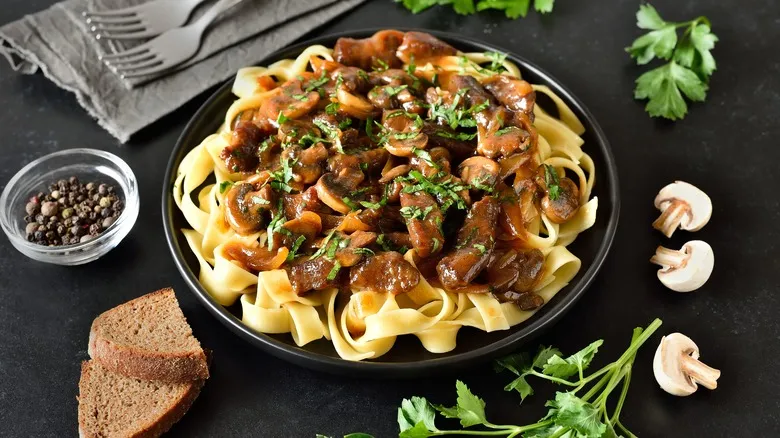
When you think of a rich and creamy dish like beef Stroganoff, fresh herbs might not be the first thing that comes to mind. However, many chefs believe that incorporating a hint of herbaceous flavor is essential. Herbs and spices can introduce a refreshing contrast to the sauce's richness and enhance the overall flavor profile. Jessica Randhawa, head chef and owner of The Forked Spoon, explains, "Herbs and spices can certainly elevate the dish without overpowering it. They should be used in moderation to enhance the dish rather than take center stage."
One herb frequently recommended by chefs is fresh dill. Rena Awada notes, "Dill offers a distinct, fresh flavor that brings a touch of brightness to the dish, perfectly balancing the rich and creamy sauce." Other experts suggest using parsley, thyme, and tarragon, with many also enjoying a dash of smoked paprika. The key is to add seasonings gradually and taste as you go. Keep in mind that while you can always add more seasoning, removing it once it's in the dish is much more challenging.
Neglecting wine or brandy
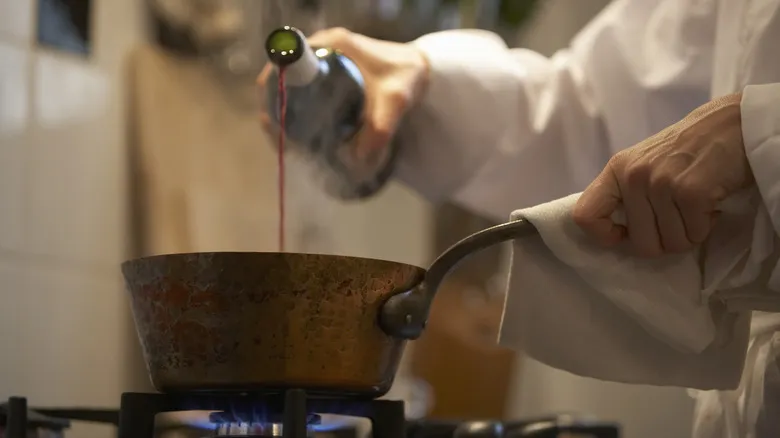
If you're looking to elevate your beef Stroganoff, incorporating alcohol might be just what you need. In fact, many chefs consider it essential. Jim Carroll noted, "Traditional Stroganoff often features a dash of brandy or white wine in the sauce, which adds depth and richness to the flavor." You can use brandy or wine to deglaze your pan, mix it directly into your sauce, or include it in the braising liquid if you opt for slow cooking.
Alcohol not only enhances the flavor of beef Stroganoff but also amplifies the taste of other ingredients. This is because alcohol interacts with certain molecules, allowing those flavors to stand out. Additionally, it helps break down proteins in the meat, potentially making your beef more tender than it would be otherwise. Feel free to experiment with various types of alcohol, such as cognac, red wine, or sherry. Jason Kennedy shared, "I like to add a splash of vodka, which may not be a traditional Russian Stroganoff ingredient, but I wouldn't be surprised if it's used there!"
Adding cold sour cream to a hot pan

Struggling to understand why your beef Stroganoff sauce keeps curdling? The culprit might be the temperature of your sour cream. Introducing cold sour cream into a hot sauce can quickly lead to a grainy, separated mixture. The reason behind cream curdling lies in the proteins. When cold sour cream is exposed to high heat, the proteins separate from the water and clump together, resulting in those unappealing lumps in your sauce.
Luckily, there are several strategies to prevent the unfortunate curdling. Marissa Stevens, founder of Pinch and Swirl, advises, "To avoid this, always use sour cream at room temperature and add it over low heat while stirring continuously. Additionally, tempering the sour cream by mixing in a small amount of the hot Stroganoff sauce before incorporating it into the pan can be beneficial." Mastering the technique of tempering is useful for various dishes; it can help prevent cream from curdling in soups, keep eggs from separating in hollandaise sauce, and eliminate clumps in custards.
Letting the sauce boil over
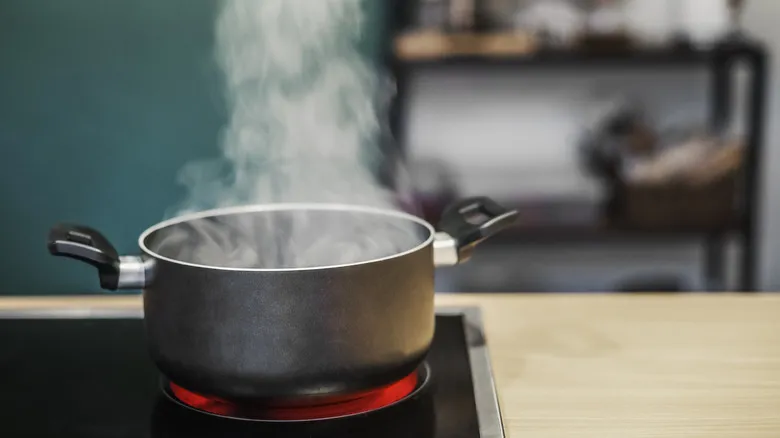
You took the necessary precautions and tempered your sour cream, yet your sauce still curdled. What could have gone wrong? The most probable explanation is that your sauce boiled over. Jim Carroll explained, "A runny or curdled sauce often results from improper temperature control or adding sour cream too soon. To achieve the desired consistency, incorporate the sour cream at the end and avoid boiling the sauce afterward."
Ideally, you should reduce your sauce and then either lower the heat or remove the pan from the heat entirely before adding the tempered sour cream. Whisk the sour cream thoroughly to blend it into the sauce, and then add your beef. If you need to reheat the sauce, do so gently over low heat to avoid curdling. If the heat gets a bit too high and the sauce begins to separate, don’t worry. Jessica Formicola notes, "While curdled sauce can be challenging to fix, you can revive it by vigorously whisking in one to two tablespoons of butter over low heat."
Forgetting to add a touch of mustard
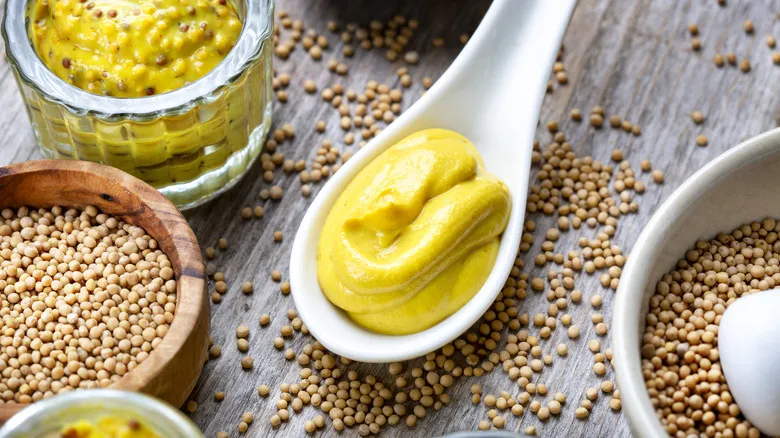
Beef Stroganoff may have its roots in Russia, but many believe it was significantly shaped by French culinary techniques. The affluent Strogonov family frequently hired French chefs, which likely led to the incorporation of familiar French ingredients. This could explain why numerous traditional beef Stroganoff recipes include mustard. While home cooks might omit this strong ingredient, many experts we consulted emphasized its ability to elevate the dish.
Marissa Stevens shared, "A genuine touch that is often missed is adding a small amount of prepared mustard right at the end, after incorporating the sour cream. This introduces a subtle tang that truly enhances the flavor without being overpoweringly 'mustardy.'" Mustard's bright and acidic profile can cut through the rich creaminess of the sauce, adding a delicate hint of heat. It can also aid in thickening the sauce. You can opt for Dijon mustard, grainy mustard, or classic yellow mustard. For a more understated flavor, mustard powder is also a great choice.
Picking the wrong accompaniment
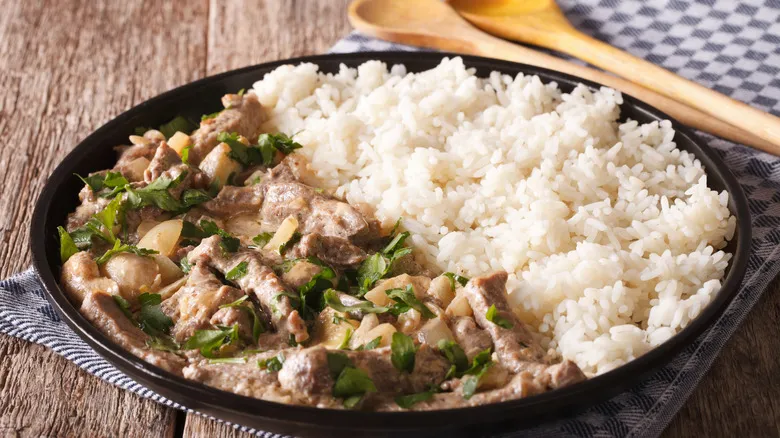
The experts we consulted shared common ground on several key aspects of preparing beef Stroganoff, such as proper cooking techniques for the meat and methods to prevent the sour cream from curdling. However, they had varying opinions on their favorite side dishes. Traditionally, beef Stroganoff is often served with egg noodles, mashed potatoes, or rice, and each chef presented compelling reasons for their preferences.
Jessica Randhawa favored egg noodles, stating, "Their rich, slightly eggy flavor complements the creamy sauce beautifully, creating a delightful contrast in textures that enhances the dish." Jason Kennedy preferred mashed potatoes, explaining, "They absorb the gravy well and can be easily scooped up with each piece of meat, allowing you to enjoy all the ingredients in one bite." On the other hand, Rena Awada championed rice, saying, "Rice is light and doesn’t overshadow the dish, allowing the rich flavors of the beef Stroganoff to shine through, which is exactly what you want."
Ultimately, the best side for beef Stroganoff is a matter of personal preference. Feel free to experiment with different options like cauliflower, wild rice, or couscous. After all, it’s your beef Stroganoff, and you can enjoy it however you like!
Recommended

The Southern Way To Elevate Your Bologna Sandwich

Ina Garten's Favorite Lemon Vinaigrette Is Too Easy And Delicious To Ignore
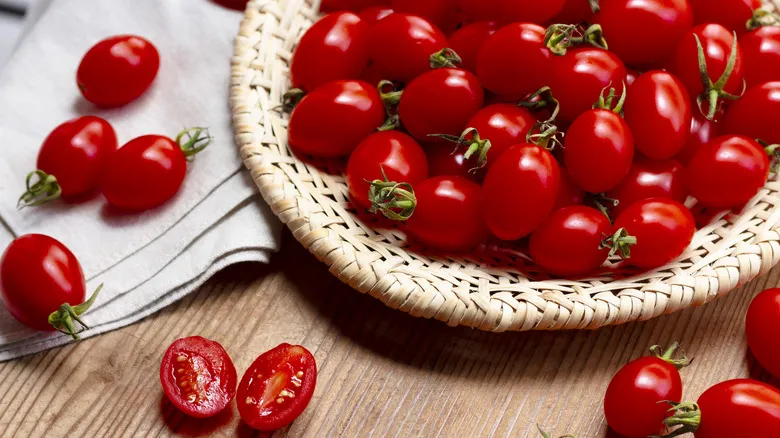
The Easy Hack You Need To Slice A Dozen Cherry Tomatoes At Once

Is The Phrase Bon Appétit Actually Considered Rude In French Restaurants?
Next up


